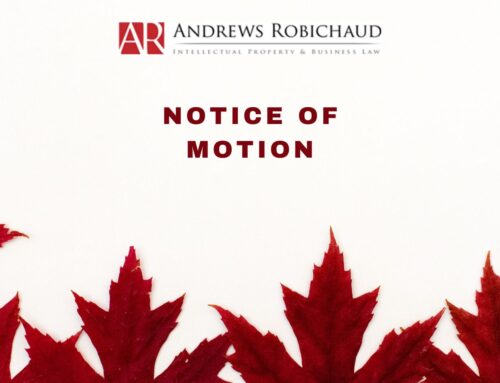What comes to mind when someone asks you about a brand or a trademark? The iconic brands of Coca Cola, Microsoft, Nike? Why are these brands so iconic? How have they evolved over time to evoke more than merely a word or a logo?
History of a Brand
According to Taylor Holland in The Content Standard, “The term derives from the Old Norse word brandr or ‘to burn,’ and refers to the practice of branding livestock, which dates back more than 4,000 years to the Indus Valley. Of course, branding has evolved over the centuries-from farmers claiming their property, to artisans claiming credit for their work, to factories claiming their products, to companies claiming their products were better than others.”
What is a brand or trademark?
In Canada, “trademark” is defined under Section 2 of the TMA as:
sign includes a word, a personal name, a design, a letter, a numeral, a colour, a figurative element, a three-dimensional shape, a hologram, a moving image, a mode of packaging goods, a sound, a scent, a taste, a texture and the positioning of a sign; (signe)
trademark means
- (a) a sign or combination of signs that is used or proposed to be used by a person for the purpose of distinguishing or so as to distinguish their goods or services from those of others, or
- (b) a certification mark; (marque de commerce)
Common Branding Approaches
As noted, a brand originally consisted of a simple marking or burning into wood or metal (or other objects).
There are numerous examples of a company adopting a word (whether invented or derived from components of words) and often combining them with distinctive logos or memorable slogans. We are most likely familiar with the more historical or traditional forms of brands, such as a word, for instance: NIKE, or their logo:  . Over time we have also become familiar with their famous slogan: JUST DO IT.
. Over time we have also become familiar with their famous slogan: JUST DO IT.
Evolution of Brands in Recent Years
In the last few years, as branding has continued to evolve and expand, companies have used innovative methods to create brand recognition and/or provide a unique sensory perception.
For instance, the adoption of unique or memorable colours establishes such recognition, as is the case with McDonald’s golden arches, Microsoft’s Windows logo, and TikTok’s black and white logos.
In the last few years, the evolution of branding has pushed protection to new heights through the adoption of specific colours as applied to various objects, for instance the Red sole shoe of Louboutin and United Parcel Service’s (“UPS”) brown trucks.
TD Bank has recently attempted to expand the application of a Color Mark. Rather than have a trademark of the color green as applied to its name, design, or building, TD applied to trademark the color green as applied to banking in general, and not applied to any “delineated contours.”
Companies have also adopted 3-D Marks to establish and protect their unique nature. Such Marks can include a designed horseshoe or even building configurations such as a restaurant’s exterior architecture or Apple’s retail store configuration.
A Mode of Packaging Mark (previously referred to as a “distinguishing guise”), such as the glass Coca-Cola bottle or Lindt’s chocolate Easter bunnies, provides another layer of protection of a brand’s identity.
Innovative Branding
Trademark protection continues to develop in innovative ways that protect brand creativity. Sound Marks, such as the Twentieth Century Fox Film’s introduction, Tarzan’s yell, MGM Lion Corp.’s film introduction, and the Hunger Games’ whistle used to create an association for consumers with the sound, brand, and source.
In some recent cases, companies have attempted to use Scent Marks to distinguish their brands from those of their competitors, create yet another niche market, attract early adopters, and cultivate lasting relationships with consumers. For example, Crayola Properties Inc. has recently filed a trademarked scent for Crayons to distinguish their product from those of their competitors.
And finally, Texture Marks, such as those recently applied for by Chanel and Durative, are another way companies seek to protect their trademarks and retain brand loyalty.
Trademarks for moving images and holographic marks have not yet been popularized in Canada, but are starting to garner some attention.
Why try to protect or register these types of brands or trademarks?
More and more, companies are securing multiple layers of protection through both traditional and non-traditional trademarks. Having the various mark categories available ensures companies can protect and benefit from the fruits of their unique creativity. In particular, companies recognize the importance of brand continuity while also leading the way in cutting edge trademark protection. Such leadership and innovation can help a company retain existing customers and appeal to new customers through new or unconventional marketing platforms.
Can they be protected under typical government regimes?
The often-referenced, non-traditional trademarks are generally more difficult to protect. As a trademark registration provides the owner with exclusive rights to the brand, trademarks offices in many countries are often reluctant to provide registration in a certain colour, shape, sound, or texture. The nature of these trademarks may be considered to unduly restrict competitiveness in the industry. Often, the owner will be required to demonstrate that a registration actually allows the public some assurance of source and avoids confusion. The requirements to provide evidence of public awareness (or often fame) will involve significant time and costs. As a result, a company needs to determine if there is a long-term commitment in these types of trademarks, given ongoing efforts to protect them.
It will be interesting to see how trademarks continue to evolve as innovators constantly push the limits and definition of what is a trademark.





Leave A Comment